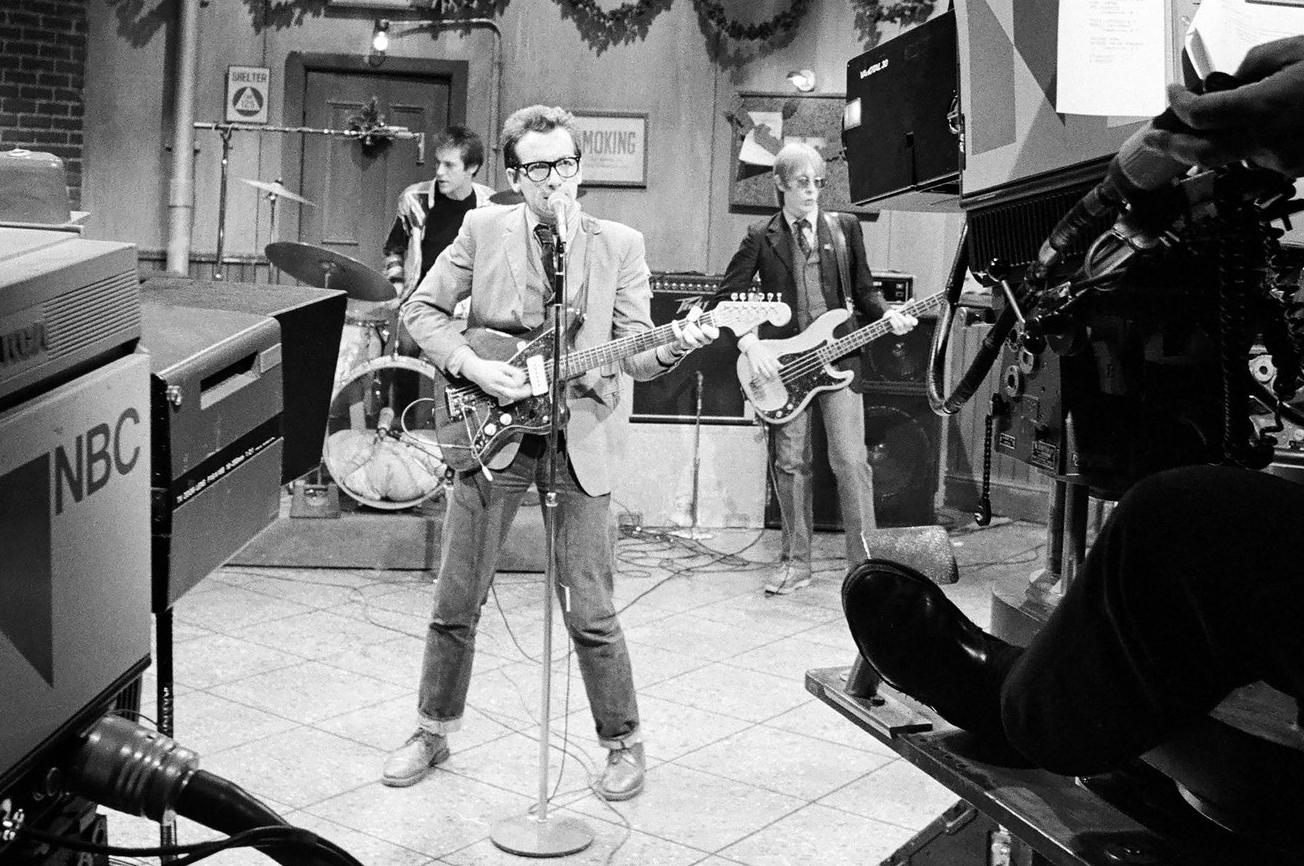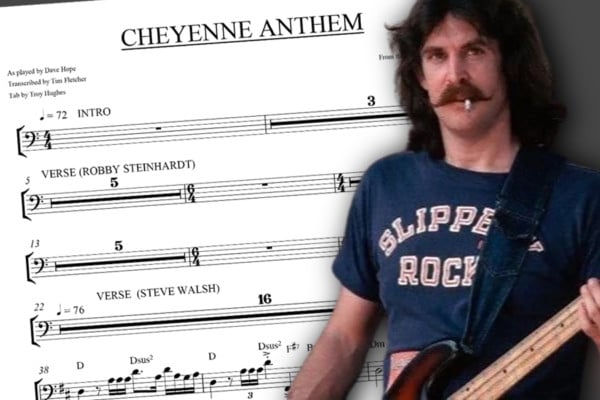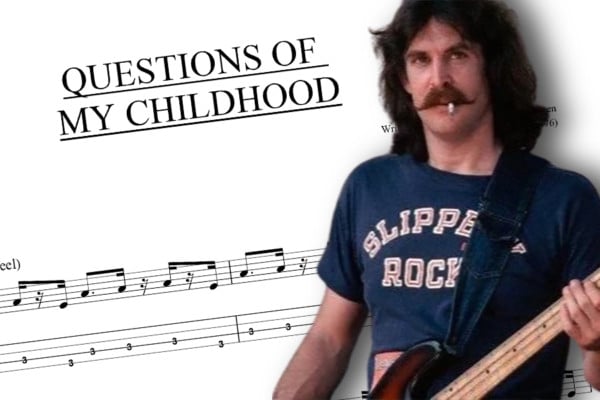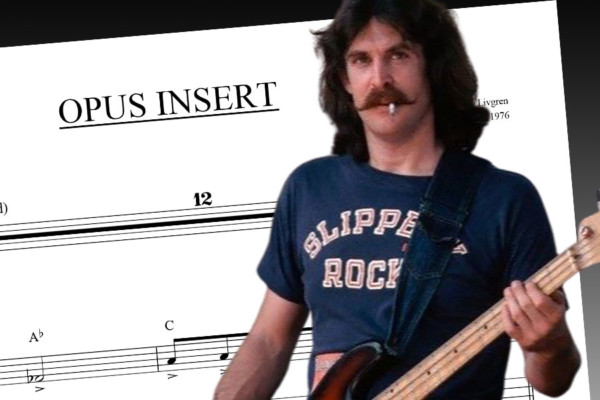Bass Transcription: Bruce Thomas’ Bass Line on Elvis Costello and the Attractions’ “Oliver’s Army”

British singer-songwriter Elvis Costello has had a long and varied career, and although his early hits were in the new wave era, with songs such as “Watching the Detectives” and “Pump it Up”, he could also create subtle ballads (“Alison”), cover jazz standards (“I Don’t know What to do With Myself”) and would later release an album of country standards (“Almost Blue”).
Costello’s first album “My Aim is True” was made before he had his own permanent backing band, and the sessions utilized the US band ‘Clover’, whose bass player Johnny Ciambotti later played on releases by Carlene Carter and John Prine. The album was not initially successful, but Costello’s record label, Stiff, showed faith in him, and used another pre-existing band (The Rumour) to back Costello on what was to be his first hit single – “Watching the Detectives”. The bassist on this track, Andrew Bodnar, would later go on to work with The Thompson Twins and The Pretenders.
The need to form a regular recording and touring unit led to auditions that saw keyboardist Steve Nieve, drummer Pete Thomas, and bassist Bruce Thomas come together to form an effective working band that was to be named ‘The Attractions’. Bruce had earlier worked with Paul Rogers (Free), The Sutherland Brothers & Quiver and singer-songwriter Al Stewart, and brought an inventive and melodic sense to Elvis’ songs.
Thomas played on nine albums and toured regularly with Elvis between 1978 and 1987 when he left the group. Bruce returned to The Attractions between 1994 and 1996 when Elvis reunited the original line-up, touring and recording two further albums. Bruce also played on The Attractions’ own album “Mad About the Wrong Boy”, and played on album sessions for Suzanne Vega (“99F”) and John Wesley Harding (“Here Comes the Groom”), and later began to write non-fiction books about his own experience in the music industry, the life of martial artist Bruce Lee, and Manchester United football club of which he is a long-time fan.
The intro of “Oliver’s Army” begins with a simple triad-based riff in A that utilizes the major sixth as it returns to the root, and some straightforward root and fifth movements. This continues into the verse which ends on a C#7 chord, which facilitates the movement into a modulated pre-chorus. This includes a descending walking bass idea and a jazzy semi-chromatic run as a II-V turnaround before the chorus. The bass line in the chorus itself features some interesting melodic ideas including using the third of the chord to create inversions (bar 24) and then a short repeat of the intro. After repeats of the verse, pre-chorus and chorus, the middle section modulates into F# major and then later into B major which lasts until the end of the track. Bars 65-7 use an unexpected leap to a higher register and then a swift run-down that leads into a second middle section that mirrors the intro, which itself runs into the final chorus. The second half of the chorus is repeated three times and then the ending again utilizes the introduction idea.
The song has some chordal similarities to “Don’t Worry Baby” by The Beach Boys, although it modulates into the chorus while “Oliver’s Army modulates into the pre-chorus, and it also contains an octave piano riff from Steve Nieve that is reminiscent of ABBA’s “Dancing Queen”. The song made number 2 in the UK in March 1979, and was Elvis Costello’s highest charting single.
Bruce’s playing has its roots in 60’s rock and pop; “My influences were initially Duck Dunn, because he tended to play more easily learn-able bass lines than McCartney, Entwistle and Jamerson — who all eventually influenced me along the way. I think there’s a bit of all of them in my playing.” He also cites Paul Samwell-Smith of The Yardbirds and Chris White of The Zombies as helping to form his style. During his time with Costello, Bruce Thomas was known for playing a salmon pink 1964 Fender Precision, but he also played Danelectro Longhorn and Wal basses.
Download the transcription and follow along with the track:



Just played along…one of my favorite Elvis’ songs, Thank you!